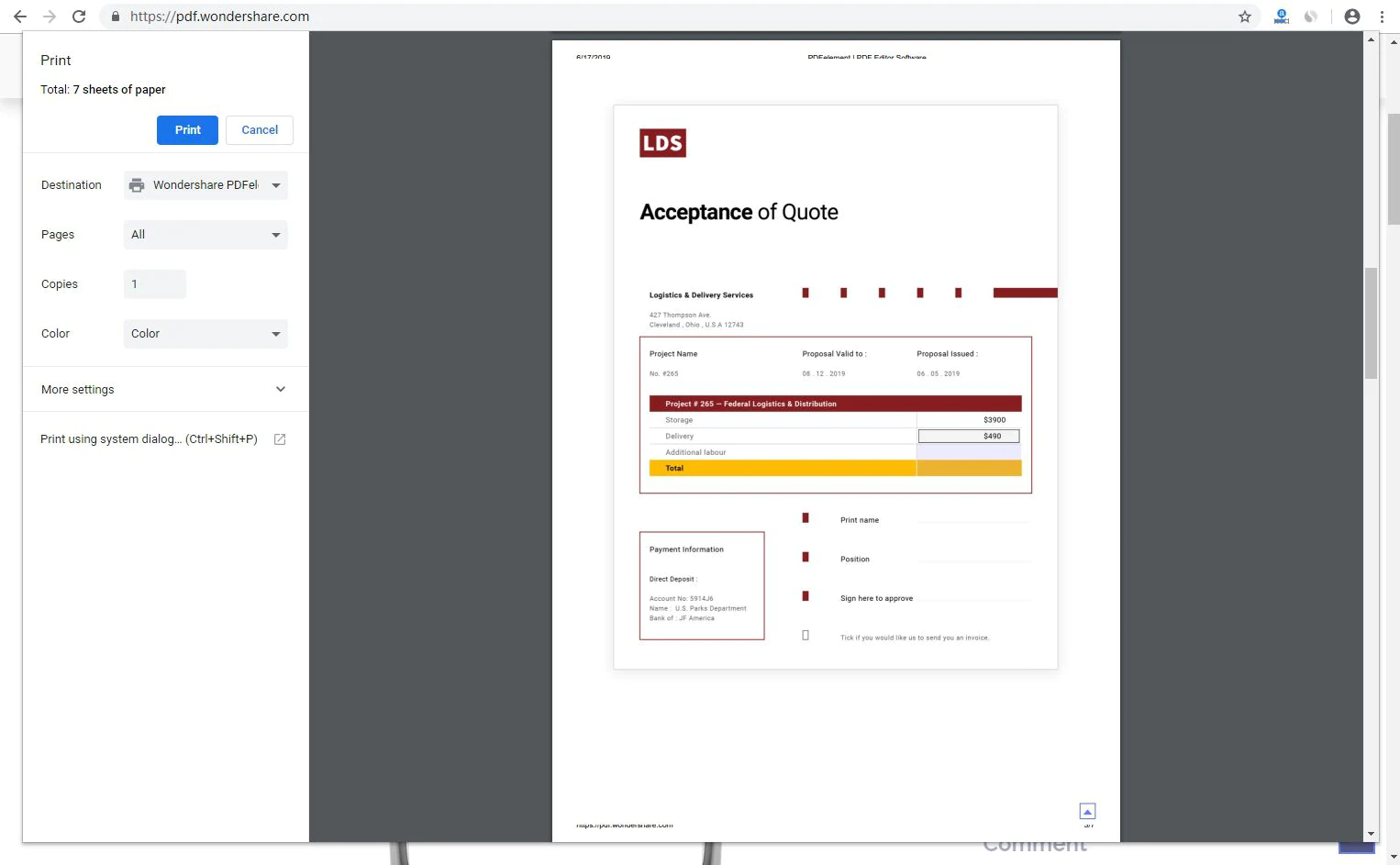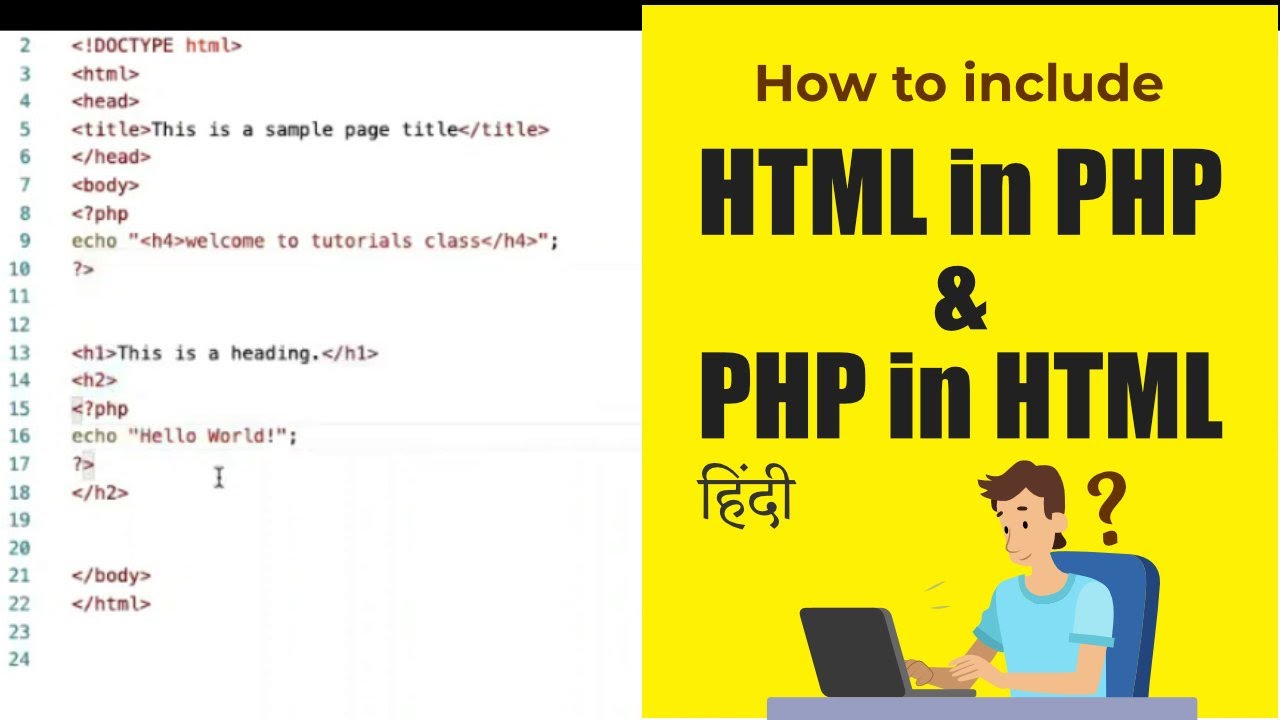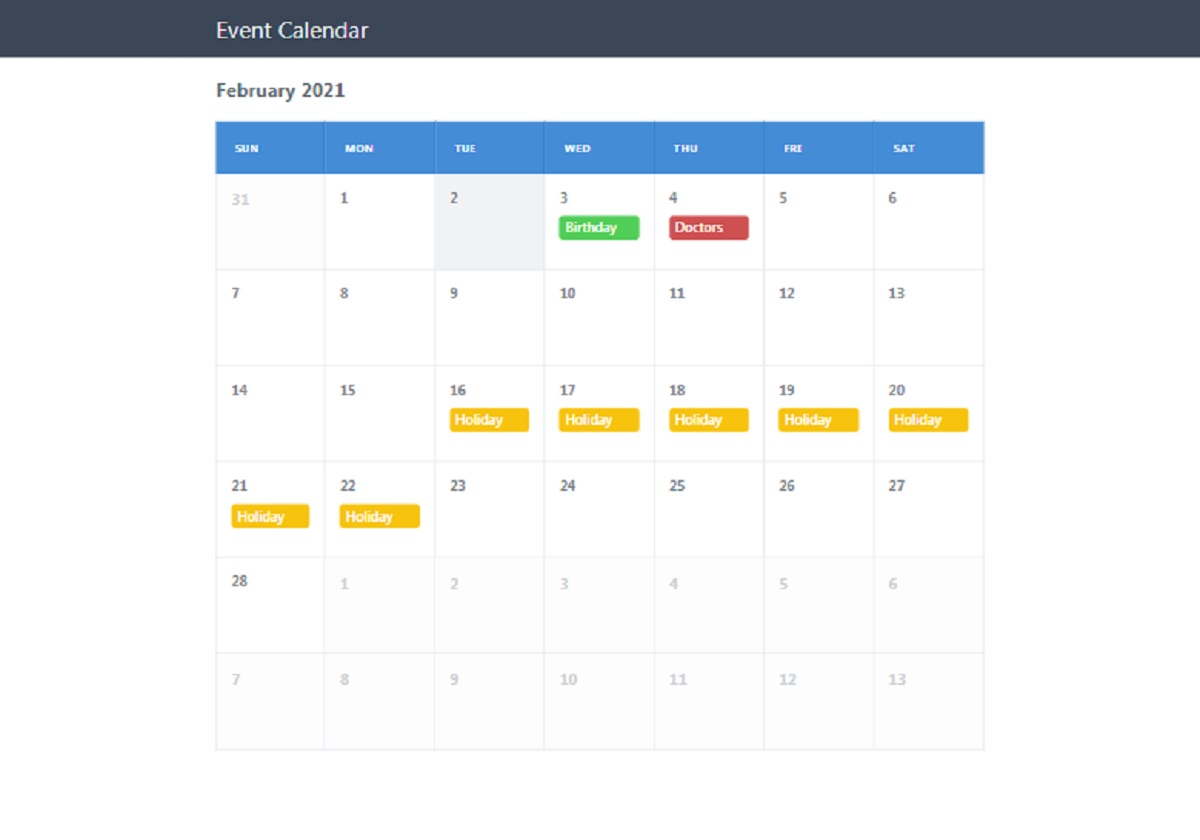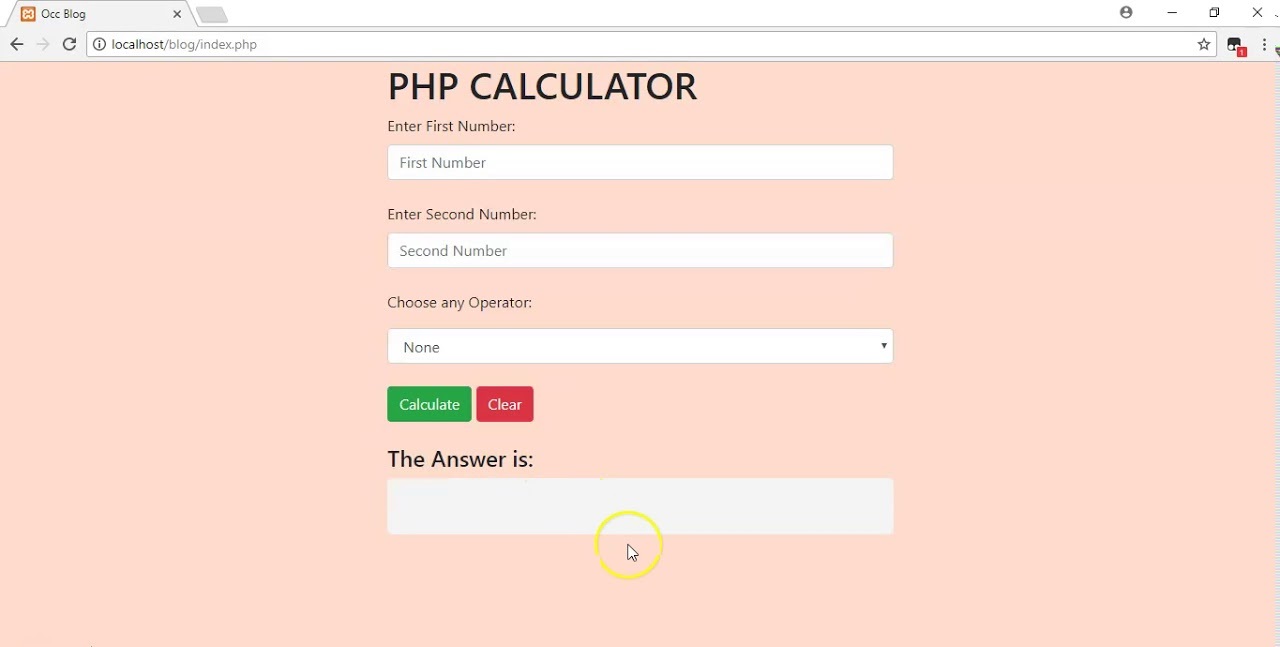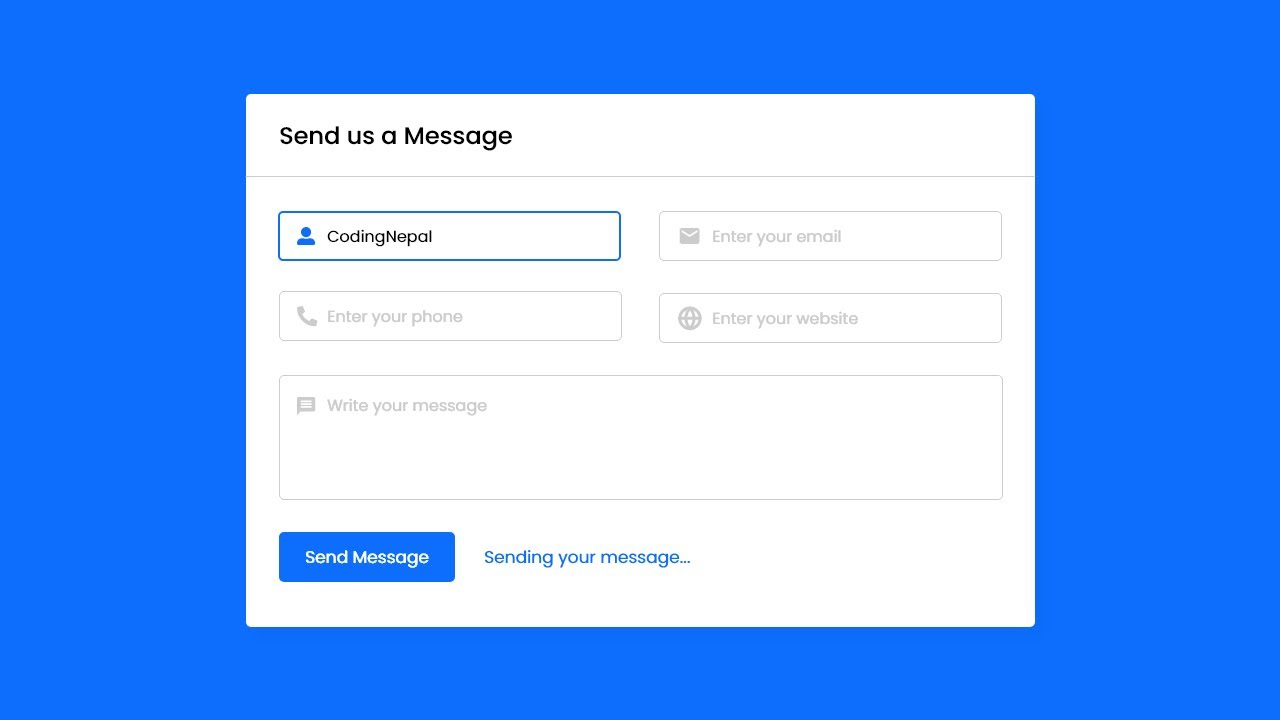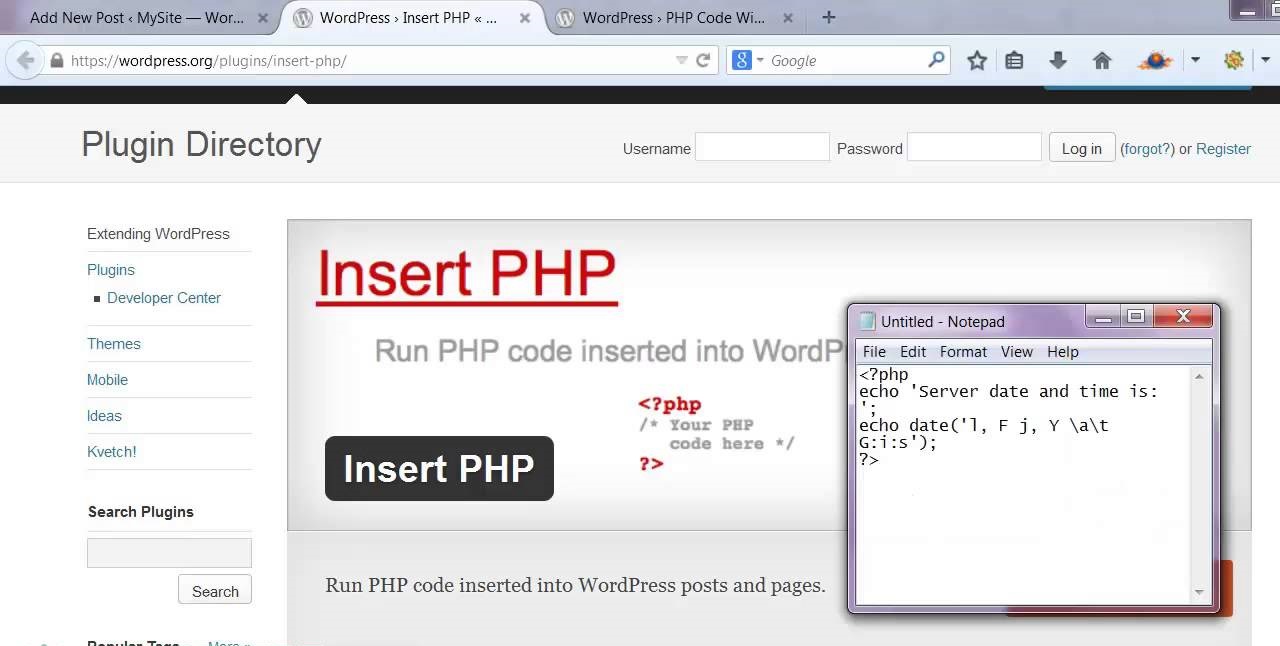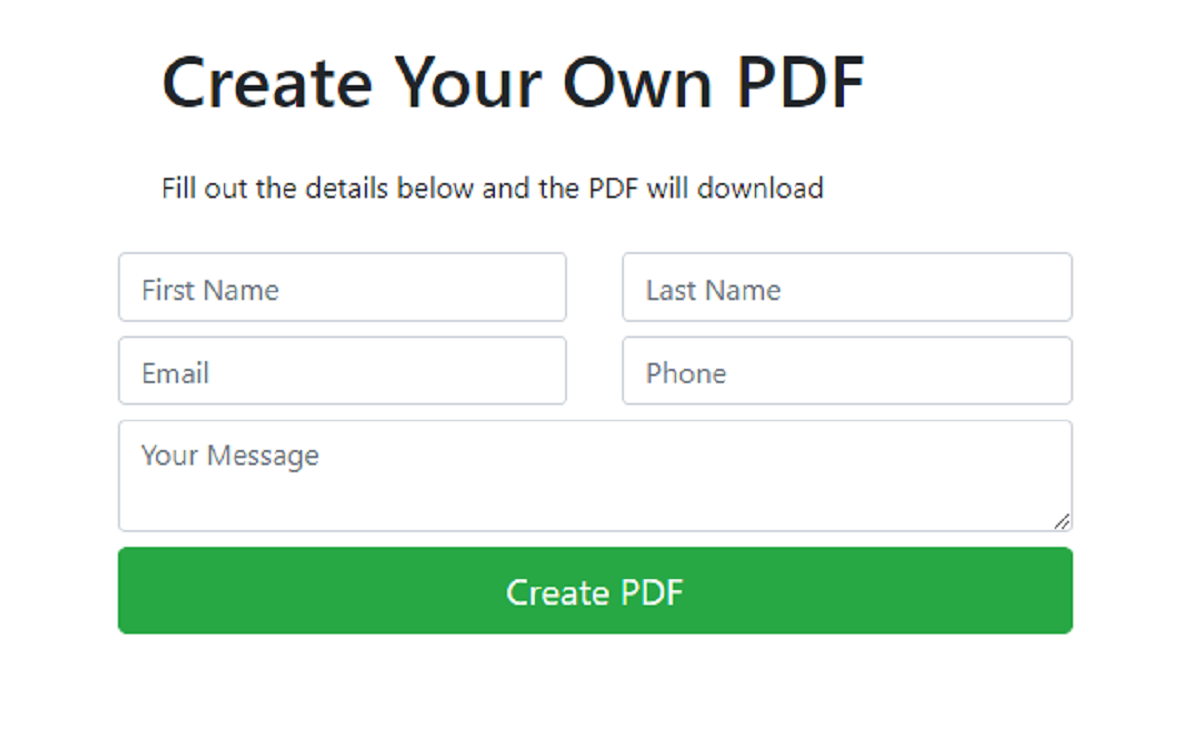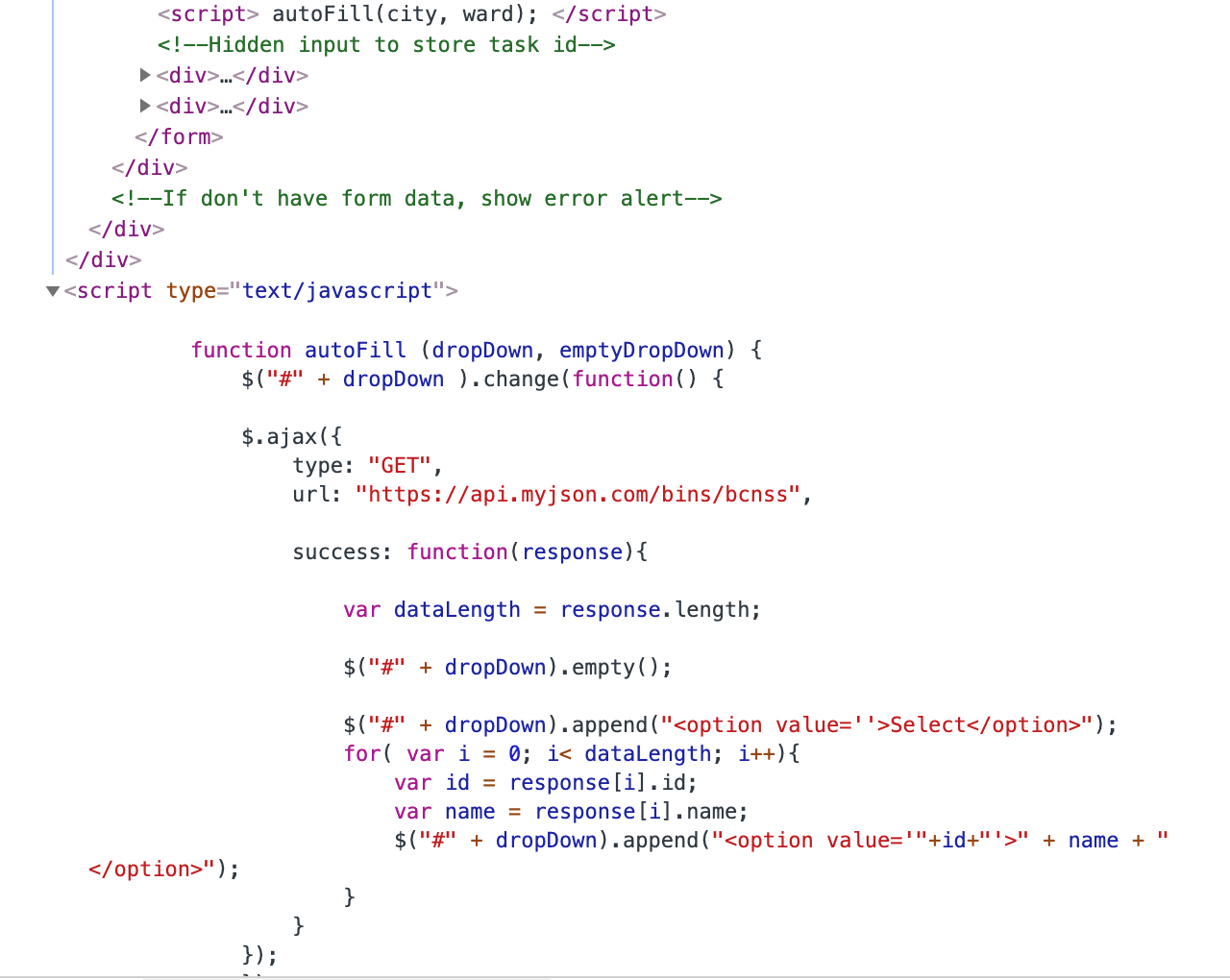Introduction
Welcome to the world of web development, where the realms of HTML and PHP intersect. If you’re new to the world of coding or have just started to explore the fascinating realm of PHP, you might find yourself wondering where exactly to place PHP code within an HTML document. This is a common query for beginners and it’s crucial to understand the correct placement of PHP code to ensure your web pages function as intended.
Before diving into the details, let’s take a moment to understand what exactly PHP is. PHP is a server-side scripting language commonly used for web development. It allows you to create dynamic web pages by embedding code within HTML. With PHP, you can perform various tasks such as generating dynamic content, interacting with databases, and processing forms, making it an essential tool for web developers.
When it comes to incorporating PHP code within an HTML document, there are several options available, each with its own purpose and best practices. In this article, we will explore the different ways to place PHP code in HTML and provide you with some guidelines to follow for optimal coding practices.
Whether you want to execute PHP code inline, within HTML tags, or in the head or body section of an HTML document, we’ve got you covered. By the end of this article, you’ll have a clear understanding of the different placement options available and be equipped with the knowledge to make the right choices for your web development projects.
What is PHP?
PHP, which stands for Hypertext Preprocessor, is a widely used server-side scripting language primarily designed for web development. Unlike client-side languages such as HTML and CSS that are executed in the user’s web browser, PHP is executed on the server before the web page is delivered to the browser. This server-side processing allows PHP to generate dynamic and interactive content, making it a powerful tool for creating dynamic web pages.
Originally created in 1994 by Rasmus Lerdorf, PHP has evolved over the years and is now maintained by The PHP Group. It has become one of the most popular programming languages for web development, powering millions of websites around the world.
One of the key features of PHP is its ability to seamlessly integrate with HTML. PHP code can be embedded directly within an HTML document, allowing for the execution of dynamic server-side operations. This integration makes it possible to fetch data from databases, process forms, and generate HTML content dynamically based on user inputs or other variables.
In addition to its integration with HTML, PHP also supports a wide range of functionalities. It provides built-in functions for performing common tasks, such as manipulating strings, working with arrays, handling files, and interacting with databases. Furthermore, PHP is compatible with various database systems, including MySQL, PostgreSQL, Oracle, and more, giving developers flexibility in choosing the preferred database for their projects.
Furthermore, PHP is an open-source language, meaning that its source code is freely available and can be modified and extended by the developer community. This has led to the development of a vast ecosystem of libraries, frameworks, and tools that further enhance PHP’s capabilities and speed up the development process.
Overall, PHP is a versatile and powerful scripting language that provides developers with the tools they need to create dynamic and interactive web pages. Its seamless integration with HTML, extensive functionality, and strong community support make it an excellent choice for both beginners and experienced developers alike.
The Basics of PHP in HTML
When it comes to incorporating PHP code within HTML, it’s important to understand the basics of how PHP is integrated and executed within an HTML document. PHP code is enclosed between tags, which indicate to the server that the code within should be processed as PHP. The output of PHP code is then inserted into the HTML document, allowing for dynamic content generation.
One important thing to note is that the PHP code should be saved with a .php file extension. This tells the server that the file contains PHP code and needs to be processed accordingly. Once the server receives a request for a .php file, it executes the embedded PHP code and delivers the resulting HTML content to the user’s browser.
PHP code can be placed at various locations within an HTML document, depending on the desired functionality and output. Let’s explore the different options available for placing PHP code in HTML.
1. Inline PHP Code: The simplest way to incorporate PHP in HTML is by using inline PHP code. This involves placing the PHP code directly within an HTML element, attribute, or text. For example:
html
Welcome to our website!
In the above example, the PHP code is embedded within the paragraph tag, allowing dynamic insertion of the name.
2. Using PHP in HTML Tags: PHP code can also be used within HTML tags to generate dynamic attributes or content. For instance:
html
“>Visit our website
In this example, the PHP code generates the URL dynamically, which is then used as the href attribute of the anchor tag.
3. PHP in the Head Section: It is also possible to include PHP code within the head section of an HTML document. This is often used for generating dynamic page titles or including external CSS or JavaScript files based on certain conditions.
4. PHP in the Body Section: PHP code can be placed within the body section to dynamically generate content such as lists, tables, or forms. This works especially well for fetching data from a database and displaying it on the web page.
5. PHP before and after HTML: PHP code can also be placed before or after the HTML content. This is useful for performing server-side operations or initializing variables before the HTML is rendered, or for executing PHP code after the HTML content has been displayed, such as processing form submissions.
These are the basic ways to include PHP code within HTML. Next, we will discuss the best practices for placing PHP code in HTML to ensure optimized and maintainable code.
Where to Put PHP Code in HTML
Now that we understand the basics of PHP in HTML, let’s dive into the different locations where PHP code can be placed within an HTML document. The choice of placement depends on the functionality you want to achieve and the specific requirements of your project. Here are some common options:
1. Inline PHP Code: As mentioned earlier, inline PHP code is placed directly within HTML elements, attributes, or text. This allows for dynamic content generation at specific locations within the HTML structure. Inline PHP code is best suited for small and simple calculations or displaying variables within a particular HTML element.
2. Using PHP in HTML Tags: Another option is to use PHP code within HTML tags to dynamically generate attributes or content. This is useful when you need to generate dynamic URLs, populate form fields with variables, or conditionally apply styles to HTML elements based on certain criteria.
3. PHP in the Head Section: The head section of an HTML document typically contains metadata, CSS links, and JavaScript references. In some cases, you may need to generate dynamic content within the head section, such as setting the page title based on user input or conditionally including external scripts or stylesheets. Placing PHP code in this section allows for the dynamic generation of these elements.
4. PHP in the Body Section: The body section is where the main content of the web page resides. You can include PHP code within this section to generate dynamic content, such as fetching data from a database and populating a list, table, or form on the page. This allows for a more interactive and personalized user experience.
5. PHP before and after HTML: PHP code can also be placed before or after the HTML content. This can be useful for performing server-side operations, such as connecting to a database, initializing variables, or processing data before the HTML is rendered. Additionally, PHP code placed after the HTML content can handle form submissions, perform calculations, or execute any server-side logic after the user has interacted with the page.
When deciding where to put PHP code in HTML, it’s important to consider code organization and readability. It’s a good practice to separate PHP code from HTML as much as possible, using PHP to fetch and process data, and HTML to handle the presentation of that data. This separation enhances code maintainability and makes it easier to debug and modify in the future.
Ultimately, the choice of where to put PHP code in HTML depends on the specific requirements of your project. Consider the functionality you want to achieve, the structure of your HTML document, and the best practices of code organization and readability. By mastering the art of placing PHP code within HTML, you’ll be able to create dynamic and engaging web pages that meet your users’ needs.
Inline PHP Code
Inline PHP code refers to placing PHP code directly within the content of an HTML document. This method allows for the execution of PHP code at specific locations within the HTML structure, providing dynamic functionality and content generation. Here are some key points to consider when using inline PHP code:
1. Syntax and Placement: Inline PHP code is enclosed within tags. The code inside these tags will be interpreted and executed by the server. It can be placed anywhere within an HTML document where PHP code is allowed.
2. Concatenation and Echoing: In inline PHP code, you can concatenate strings and variables to generate dynamic content. The echo statement is commonly used to output the result to the HTML document. For example:
html
Welcome !
The PHP code outputs the value of the $name variable within the paragraph tag, resulting in a personalized greeting for each user.
3. Conditional Statements and Loops: Inline PHP code is well-suited for including conditional statements and loops within HTML. This allows for dynamic control of content or the repetition of elements. For example:
In this example, the inline PHP code generates a login or logout link based on the value of the $isLoggedIn variable.
4. Limitations and Best Practices: While inline PHP code offers flexibility, it’s important to use it judiciously and maintain code readability. Avoid placing overly complex or lengthy PHP code inline, as it may make the HTML document harder to understand and maintain. Instead, consider modularizing complex functionality into separate PHP files and including them when needed.
When using inline PHP code, follow good coding practices such as indenting and commenting to improve code readability. Additionally, it’s important to validate and sanitize user input to prevent security vulnerabilities and ensure the reliability of your application.
Inline PHP code provides a straightforward way to incorporate dynamic functionality directly into your HTML document. By understanding the syntax and best practices of inline PHP code, you can create dynamic web pages that respond to user interactions, personalize content, and enhance the overall user experience.
Using PHP in HTML Tags
One of the powerful features of PHP is its ability to be embedded within HTML tags. This allows for the dynamic generation of attributes and content within specific elements. Let’s explore how to use PHP in HTML tags and the benefits it offers:
1. Generating Dynamic Attributes: PHP can be used to generate dynamic attributes for HTML tags. This is particularly useful when you need to create links, set image sources, or populate form fields dynamically. For example:
html
“>Visit our website
In this case, the PHP code generates the URL dynamically, which is then used as the href attribute of the anchor tag. This allows for flexibility in generating dynamic links based on variables or conditions.
2. Conditionally Displaying Content: Another application of PHP within HTML tags is the ability to conditionally display content based on certain criteria. This is achieved using conditional statements such as if-else or switch-case. For instance:
html
Welcome back, !
Welcome, guest! Please log in to access your account.
In this example, the PHP code determines whether the user is logged in, and based on the condition, either greets the user by name or prompts them to log in. This allows for personalized and dynamic content within the HTML document.
3. Dynamically Populating Form Fields: PHP can also be used to populate form fields with dynamic content. This is useful when retrieving saved data or displaying pre-filled forms. For example:
html
In this example, the PHP code dynamically sets the page title, combining a generic title with a specific $pageTitle variable. This allows for dynamic and relevant page titles based on the specific content of the page.
2. Conditional Resource Inclusion: PHP can be used to conditionally control the inclusion of external CSS or JavaScript files in the head section. This can be based on user input, login status, or other dynamic factors. For instance:
html
In this example, the PHP code determines if the current page is the homepage, and if so, includes a specific CSS file. This allows for targeted styling or functionality for the homepage while maintaining shared resources by including the common.js file in all cases.
3. Meta Tags and Dynamic Data: PHP can be used to generate dynamic meta tags within the head section, such as meta descriptions or keywords. This allows for improved SEO and the customization of metadata based on specific content or user input. For example:
html
“>
In this case, the PHP code dynamically populates the meta description and keyword tags based on the $metaDescription and $keywords variables. This ensures that search engine crawlers and users see relevant and descriptive information about your web page.
By utilizing PHP in the head section, you can generate dynamic page titles, conditionally control resource inclusion, and customize meta tags. This enhances the overall flexibility and functionality of your web pages. However, it’s important to keep the logic minimal and focus on generating dynamic content rather than complex computations. This helps maintain code readability and separation of concerns.
PHP in the head section allows you to create dynamic and responsive web pages, improving the user experience and ensuring the relevance and accuracy of metadata. Embrace the power of PHP in the head section to bring your web pages to life.
PHP in the Body Section
The body section of an HTML document contains the main content that is visible to the users. PHP can be used within the body section to generate dynamic content, fetch data from databases, and create interactive elements. Let’s explore how to incorporate PHP in the body section and the advantages it offers:
1. Dynamic Content Generation: PHP enables the dynamic generation of content within the body section of an HTML document. This is particularly useful when displaying data fetched from a database or when generating lists, tables, or interactive forms. For example:
html
” . $product[‘name’] . “









